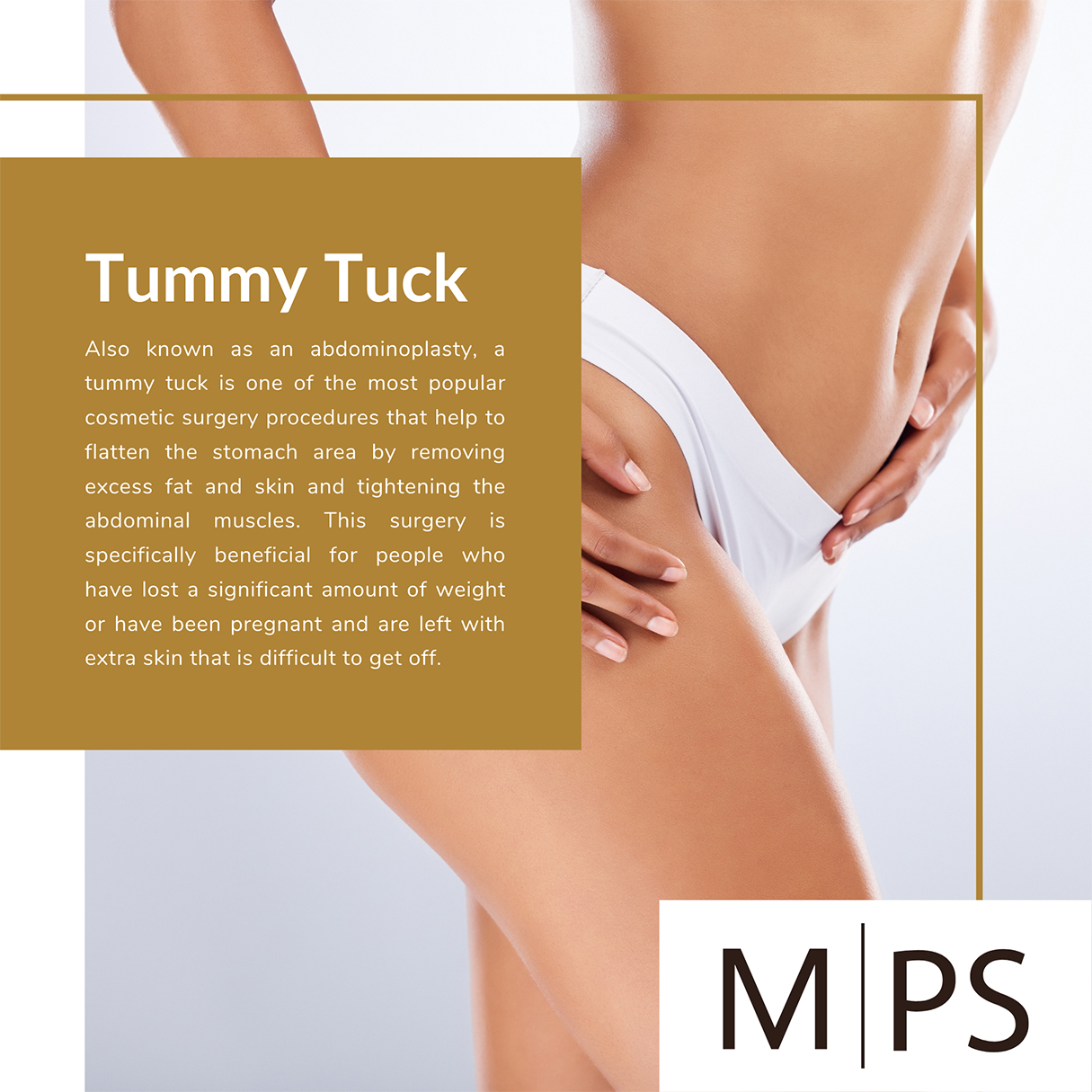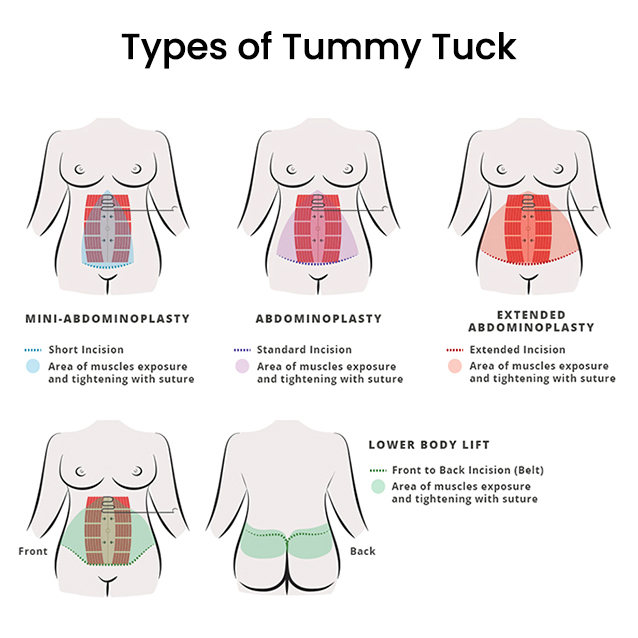A tummy tuck is the best way to get rid of excess skin and stretch marks on your lower abdomen. It can also tighten your midsection successfully and gives you a chance to enjoy a toned and slimmer appearance. Schedule a consultation with Dr. David Shokrian for specific information regarding the tummy tuck procedure. He explains the various stages of recovery following your abdominoplasty and creates a timeline to help you understand what recovery may be like and how to make it easier.
Also known as an abdominoplasty, a tummy tuck is one of the most popular cosmetic surgery procedures that help to flatten the stomach area by removing excess fat and skin and tightening the abdominal muscles. This surgery is specifically beneficial for people who have lost a significant amount of weight or have been pregnant and are left with extra skin that is difficult to get off.
It is essential to discuss your goals and the end results you expect from this surgery with your plastic surgeon to ensure everything goes just as you want. Most patients can get back to normal routines after eight weeks. The surgeon will guide you regarding healing and recovery to ensure everything progresses smoothly.
To help you prepare for a tummy tuck surgery procedure, here is a week-by-week timeline of what you can expect after this surgery and what the recovery process will be like.


Immediately After Surgery
Your abdomen is secured with an abdominal binder that is afterward replaced with a compression garment. A mesh strip surgical dressing is placed along the incisions, and small tubes around them to drain any built-up fluid.
As you prepare to go home, the surgeon will provide specific instructions to ensure you recover successfully. You will be guided on how to care for the drain tubes, what types of physical activities to avoid, and how long to wear an abdominal pressure garment.
You will need someone to drive you home after the surgery, as tummy tuck procedures are performed under general anesthesia. You will have limited mobility, thus, you will need help from others to complete everyday tasks like cooking, visiting the restroom, and getting in and out of bed for the next few days. Your doctor may ask you to eat a light diet in the days following surgery to ensure you do not strain the stomach muscles.
Keep in mind that everyone experiences the recovery process differently. You should consider this tummy tuck recovery timeline as a general guide only.
Week 1 After The Surgery
You will experience some pain and discomfort in the initial days, but it can be managed with medications. Your doctor provides prescription pain medications to prevent infection, as well as to manage discomfort. You must continue wearing the compression garment as it is necessary to minimize swelling, support healing, and maximize results.
Movements such as bending, lifting, and even standing may feel uncomfortable and difficult. Don’t fret if you cannot walk or lie down flat for a couple of weeks after surgery. You may feel better sleeping in a recliner, reclining bed, or using a wedge to help maintain some flexion while resting. The surgeon will tell you which specific movements to avoid during this time.
It is necessary to replace the bandages on the incision site and clean the area around the incision gently every other day. The surgeon will call you for a follow-up appointment 7-10 days after the surgery to check the progress.


Week 2 After Surgery
There will be some swelling in the treated area, but the pain, bruising, and feeling of tightness from your tummy tuck usually begin to fade by the second week. By this time, you may be ready to resume most aspects of normal daily activities but with some restrictions. You will have to continue wearing the compression garments to achieve the best possible results.
You can take brief walks a few times a day, to get the blood flowing and your body used to moving again. However, you must avoid smoking, drinking alcohol, and vigorous exercise and take things easy to ensure recovery proceeds smoothly.
You can get back to a regular diet bit by bit, but it is essential to drink plenty of water and limit sodium intake. Your doctor may recommend light massage to promote healing.
Week 3 and 4
By weeks 3 and 4, you will be feeling much better and almost back to your normal self. However, you must continue following the surgeon’s instructions to ensure proper healing.
You can resume exercise after approval from surgeon, but you must return to activity gradually. Do not push your body to do more than it can handle. If you are tired, it is necessary to rest. You can do more when you have healed sufficiently. It is time to maintain a healthy, well-balanced diet to stay within your ideal weight range.
You will be instructed to continue wearing a compression garment and apply scar treatments to the incisions. Up to this point, your discomfort and bruising should be completely gone, and swelling should be minimal. If you experience any unusual pain, tenderness, or swelling, call your doctor immediately.
Recovering From a Tummy Tuck
It is essential to understand what the recovery will look like and how long it will take. It helps to set realistic expectations and enjoy good results.
During the follow-up visit with your surgeon, you will learn about your recovery and notice a significant change in your stomach’s contour. You will have to keep wearing the support garment for some time as per the surgeon’s instructions.
You may return to work if your work does not require heavy lifting and constant standing or bending. Heavy lifting and too much bending can impact your recovery and lead to pain or swelling in your midsection, so it is essential to be careful.
It will take approximately six weeks before you can return to weight training. It is best to consult your surgeon regarding rigorous activities to avoid complications and interrupt the healing process.
A Few Months After Surgery
You may still experience swelling in the months following a tummy tuck. There may also be numbness, pulling sensation, or bruising in the abdomen area. Even though the incision is fully healed by now, your scar may be raised and red. It will fade with time and become flat.
It is generally safe to resume normal activities, including strength training or a profession that involves physical activity. However, it is your surgeon who will make the ultimate decision.
1 Year After Surgery
Your abdominoplasty should heal completely one year later. By this time, the results are visible, and the inflammation is gone. The scar also fades with time. It will not disappear completely, but it will be nearly invisible and hidden beneath your underwear line.
To maintain your tummy tuck results, take a healthy diet and adopt an active lifestyle. Gaining or losing weight may change the appearance of your abdominal area and lead to sagging skin. It is best to go for a tummy tuck after you have had children to prevent any complications later. If you are careful and maintain your weight, you can enjoy the lifelong results of an abdominoplasty.
Remember, healing is not the same for everyone. It also depends on factors like health, age, the type of tummy tuck you are going for, and post-op care. Knowing about the timeline of a tummy tuck recovery gives you an idea of what results to expect and how to work towards achieving desired outcomes.
More our procedures:
Visit Millennial Plastic Surgery to learn more about abdominoplasty and if you are a good candidate for this procedure. Dr. David Shokrian discusses in detail the preparation and recovery process and ensures you understand what it involves. You can look forward to achieving optimal health and beauty goals and a slimmer, flatter appearance to the abdominal area with the leading, board-certified plastic surgeon in New York.
